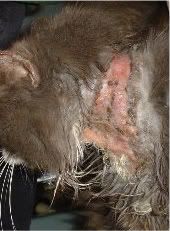 Every day people seek guidance on flea treatment options and many get bad advice that can be downright deadly to their pet.
Every day people seek guidance on flea treatment options and many get bad advice that can be downright deadly to their pet.
Ultimately, the best flea treatment for your dog or cat is the one that works and that fits your budget AND is non-toxic to your household.
People still have odd ideas about the best flea control products so if you have not purchased Flea Control Secrets, here is a list of different options to consider when seeking the best flea treatment for your animal.
Flea Collars
Contrary to popular beliefs, flea collars can help repel fleas but are not recommended as flea killers–and they can be downright toxic.
Most pet owners today use herbal collars as repellents instead of the commercial toxic products first developed by Robert Goulding Jr., an entomologist whose research into time-release pesticides led to the introduction and popularization of the flea collar in 1964.
Consumer Reports covered this method some time ago and found them to be ineffective. Recent concerns reveal toxicity issues for children and the households with animals wearing them–not to mention the issues for the animals themselves.
Flea collars concentrate flea treatment around a pet’s neck and head. There have been a variety of reports of injury to animals wearing commercial flea collars that include burns to the neck (and other areas that the collar has touched–such as paws). Other reactions such as seizures are also issues. You can read the story of TJ the cat and see flea collar injury photos here.
Topical Flea Treatment (aka Spot-On Flea Treatments)
Topical flea treatments (known as spot-on flea treatments) are currently the most popular flea control because they are easy for the owner. Topical flea control is simply applied once a month on the pet’s shoulders and protects a pet for about a month.
The EPA launched an investigation into spot-on flea control products in April of 2009 after an increase in reported severe reactions and deaths of pets from these topical products. An update on this issue is expected in October of 2009.
Three of the most popular flea control spot-on products include Frontline, Revolution and Advantage. The best source for topical flea control products is your veterinarian since reactions to over the counter (OTC) products are an issue and counterfeit flea products are suspected to be contributors to the rise in flea control product reactions.
Oral Flea Control
Oral flea treatment products are used in conjunction with other flea control methods and usually are given in pill or liquid form. The adult fleas ingesting the chemicals in a pet’s system lay infertile eggs and so stop the cycle but do not kill adult fleas. The most popular product currently on the market is called Capstar.
Flea Shampoos
Contrary to popular belief, you do not need to use toxic flea shampoos on a pet since any pet shampoo will work to kill fleas if you leave the suds in for about 15 minutes.
Ideally the shampoo will be an oatmeal pet shampoo in conditioner so that it also helps give the pet relief from itchy skin.
Dish soap (dish detergents) such as Dawn or Ivory are not recommended for use on pets for flea control since they are very harsh and very drying.
Flea Dips
Flea dips are potent, chemical rinses that are very toxic. Using any concentrated chemical should be a concern and this method has traditioinally been used only for the most severe cases and administered by a professional groomer or veterinary service.
Today there are also herbal dips on the market but water dips also can be very effective as we discussed in Flea Control Secrets.
Flea Powders and Flea Sprays
Flea powders and flea sprays are not as popular as they once were. Today most people avoid the toxic chemical flea powders or chemical flea sprays and select lesser toxic home flea remedies such as apple cider vinegar sprays or parasite dust using diatomaceous earth.
Natural Flea Treatment
Natural flea treatments are gaining popularity as alternatives for flea control. However, many people are not aware that “natural” does not always mean less toxic. Some natural herbs or essential oils can be toxic to pets so care must be used when selecting these flea control products.
Professional Flea Services
Professional flea control is often an overlooked option. Busy people appreciate the help and many of the better services will offer a service guarantee for a specific amount of time.
Flea Control Strategies that Work
Treating the interior and exterior areas of your home along with the pet are critical pieces to getting rid of fleas. If you are unfamiliar with this concept, it was covered in the triangle of successful flea control video.
Simple, consistent steps to get rid of fleas include daily dusting, vacuuming, mopping, and cleaning of bedding as well as mowing the lawn and cutting back foliage are part of this effective strategy.
Using alternative methods for flea control such as parasitic nematode and other less toxic flea product methods work together to help you get rid of fleas and keep them away.
How long will it take to get rid of fleas?
Plan on daily action for several weeks. If you use the techniques and products recommended in the triangle of successful flea control–fleas should be gone within eight weeks and then it is simply a matter of maintenance.

